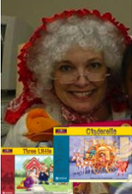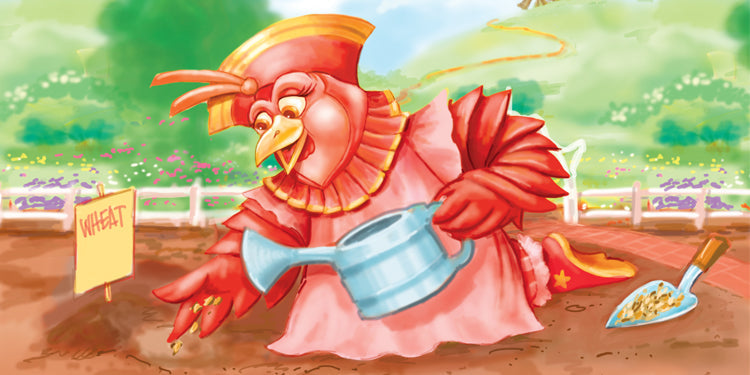 This is a guest post by Susan Paul. It originally ran in September 2014. If you like what you see here, check back frequently for more posts from here and
click here to read her blog, The Fun Factory
.
Click here to see her other posts on our blog
!
This is a guest post by Susan Paul. It originally ran in September 2014. If you like what you see here, check back frequently for more posts from here and
click here to read her blog, The Fun Factory
.
Click here to see her other posts on our blog
!
“
If you want your children to be intelligent, read them fairy tales. If you want them to be more intelligent, read them more fairy tales.”
― Albert Einstein
This is one of my all-time favorite quotes! I use it often. My last blog post was about the importance of reading fairy tales to our children. We talked about how fairy tales help us teach the basics of story elements—setting, characters, and plot (rising action, climax, and resolution)—as well as the difference between fiction and non-fiction. Once a child understands story elements, his ability to make predictions and comprehend other stories is enhanced. Today I am going to continue our discussion about fairy tales.
 Have you ever wondered why reading a fairy tale is important?
Fairy tales enrich a child’s imagination and creativity. Children learn many things when we read them books. From stories, a child can learn how a good person behaves and also can begin to realize how some people can behave badly or “evilly.” Fairy tales show children how to handle problems. They learn from the characters in the stories as they make connections to their own lives, and consider what they would do if in the characters’ shoes. Even though fairy tales can be unrealistic, they still teach a universal lesson.
Have you ever wondered why reading a fairy tale is important?
Fairy tales enrich a child’s imagination and creativity. Children learn many things when we read them books. From stories, a child can learn how a good person behaves and also can begin to realize how some people can behave badly or “evilly.” Fairy tales show children how to handle problems. They learn from the characters in the stories as they make connections to their own lives, and consider what they would do if in the characters’ shoes. Even though fairy tales can be unrealistic, they still teach a universal lesson.
 A great example of this is
The Little Red Hen
from the
Story World Real World
series. The book is adorable and the children LOVE, LOVE,
LOVE
the illustrations! What a great lesson this traditional story teaches about learning to be helpful and not to be lazy! Bridge this story with
Great Grains
, the informational text to connect the tale to real-life circumstances.
A great example of this is
The Little Red Hen
from the
Story World Real World
series. The book is adorable and the children LOVE, LOVE,
LOVE
the illustrations! What a great lesson this traditional story teaches about learning to be helpful and not to be lazy! Bridge this story with
Great Grains
, the informational text to connect the tale to real-life circumstances.
With the book
Great Grains
, we learn about the different types of grains. After that, we read
Different Kinds of Bread
to see how the grains then become bread to eat. Guess what kind of “bread” the children wanted to make? Pizza dough! So we made dough and each child made their own little pizza. They loved it. When we finished, we reread
The Little Red Hen
, and every single child said they would not be lazy and would help the Little Red Hen.
The “moral” to this lesson is this: use fairy tales to teach morals and lessons.
What can
you
learn from
Goldilocks
? How about
Cinderella
or
Jack and the Beanstalk. Enjoy the freebie. I would like to leave you with one final quote from Albert Einstein:
“When I examine myself and my methods of thought, I come to the conclusion that the gift of fantasy has meant more to me than any talent for abstract, positive thinking.”
~~
Susan Paul is an Early Childhood Specialist from Houston, Texas. Susan has taught more years than she is willing to admit, all in prekindergarten through second grade. Her passion is in pre-K but she has the most years in second grade. Susan loves dressing up as different book characters and has written a book. The book is a collection of songs she has written over the last twenty-five years to help teach skills and transitions. Visit Susan at her Facebook page , blog , and on Teachers Pay Teachers for more great teaching ideas .
~~~
For more information about the Story World Real World series shown in this post, click here to visit our website , or click the image on the left below to download a series information sheet with key features. To download the freebie, click the image to the right.





















































